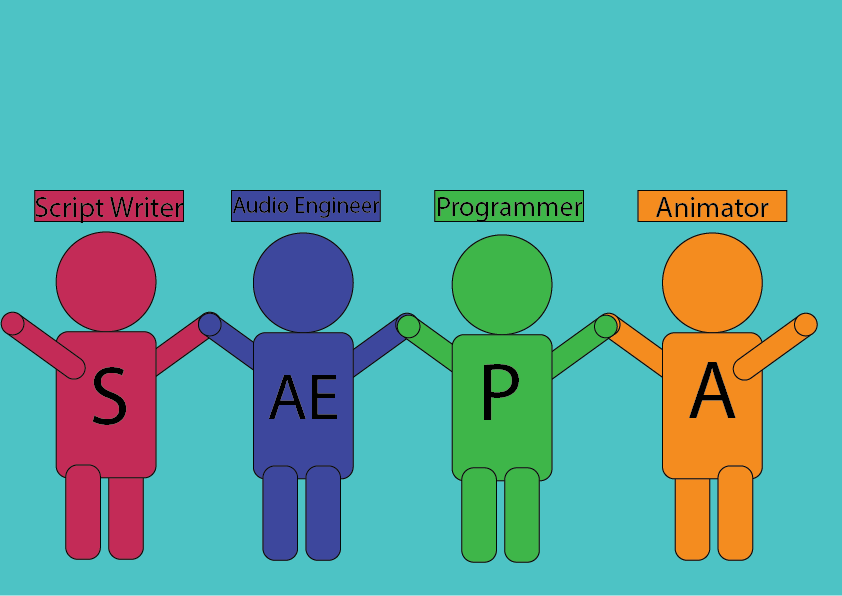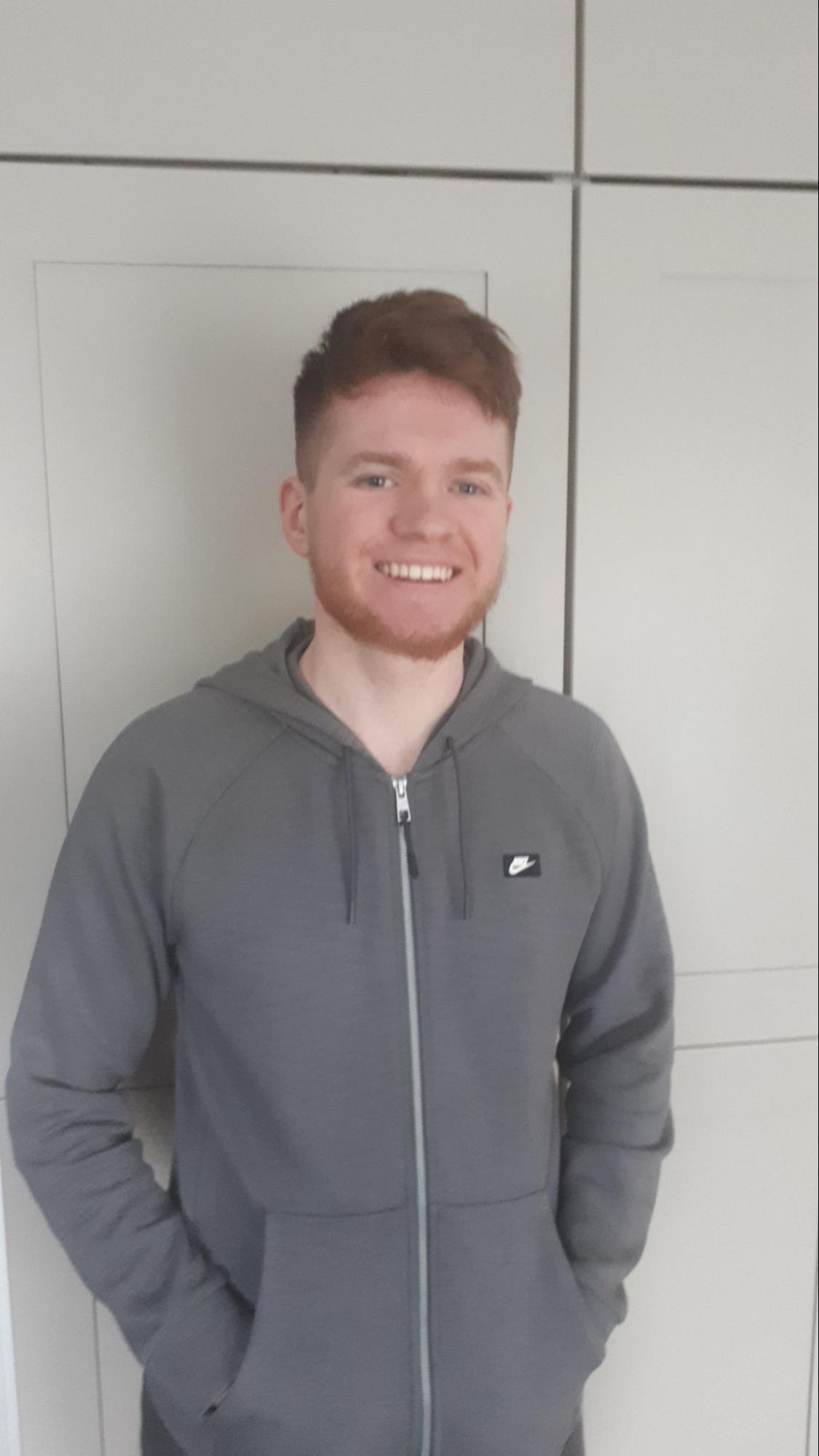Games Design Team Roles
Killian Delaney
For every game design team trying to figure out how to make a good game, they all ask the exact same questions. What does our game need to include? What can we do differently? How can we guarantee a successful game? These are the questions that run through every game design team’s head. So how do you make a successful game? The answer can always lead back to the roles of any game design. There are many different jobs involved in the making of a game, ranging from a supervisor, who would oversee the whole project, to game art designers, who could be tasked with the background aesthetics and such. But with even the two jobs which were named, there would still be other people in managerial positions or artists who have to work on other parts of the game. As these jobs are the backbone of any halfway decent game, if they are correctly filled, it is important that the people in these jobs also fit in the right design roles. What is meant by this is, can they work as a team, which is an extremely important part of any game, as no one person can ever make a decent game all by themselves. Is the team diverse enough, as a game with people from different backgrounds can provide a different look on a game which may be a very advantageous quality?
Then there are realities of working in game development, what this refers to is in many game development companies, there are often very few women and people from other backgrounds, which is a problem as games can be missing out on important key elements which may improve upon the story or development of the game as, currently game designers are most often white males, it’s just that the fans may be missing out on some great games due to the lack of diversity in the game development industry. There is also the reality of the workplace, where an indie game may be a lot more relaxed in its development, for the big companies there are often deadlines to reach so there can be a lot of pressure for team members to complete their tasks. Overall it’s important for anyone who wants to go into game design to be a problem solver, in the sense of coming across a problem, assessing the issue and looking for a solution e.t.c.
Any successful game always involves a good level of Teamwork, from the character creators to the landscape designers, they all need to work in tandem so that their desired end goal can be reached. Different sources even state how game development works better when there is a group of individuals with a shared goal, rather than one individual carrying either workload. The theme of teamwork is an important part of game design, how it is an important part of team roles, and how any decent game can be traced back to their being good teamwork.(Politowski, Ullmann, Yann-Gaël Guéhéneuc, Petrillo, 2020), (FengFeng ke, Tami Im, 2013), (McNease, Freeman, 2019), (Arizeta, Swailes, Senior, 2007). In jobs such as game development, Teamwork is very important as it’s almost an impossible task for a single person to carry out every task required for a game to be successful. The underrepresentation of women in particular and a more diverse group in general in video game has recently been highlighted.
The Guardian recently posted a news article on how women and other minorities are at a disadvantage when trying to enter the field of game development. Women and other underrepresented people struggle in work industries such as game development and struggle to get into positions of power. Minority represented groups in areas such as game design struggle to progress to any position of power as there is no clear path forward for them. (FengFeng ke, Tami Im, May 2013) , (McNease, Freeman, June 2019), (Johanna Weststar, Marie-Josee Legault 10-5-2018) Jobs such as game development have left women and other minorities severely underrepresented and made it very difficult to enter such jobs.
The game design industry, at times, can seem like an illusion of sorts for anyone that has no knowledge of what goes into making a game, whereas there are some definite Game development realities which are referring to what happens in the industry. There can often be misconceptions as to what someone who works in game design/development do, due to lack of coverage or knowledge in this sector, what is actual, and facts are that there are certain realities when working in these areas like a lack of diversity or a large teamwork influence. (Politowskia, Petrillob, Ullmanncand, Guéhéneuc Sept 2020), (FengFeng ke, Tami Im, May 2013), (Johanna Weststar, Marie-Josee Legault, 10-5-2018), (Buengeler, Situmeang, Eerde, Wijnberg, 17-12-2020), (Patrick Stacey, Joe Nandhakumar January 2011), (Milton, Slocum, Stringer, January 2020), (Arizeta, Swailes, Senior, January 2007), (McNease, Freeman, June 2019). How well people can work is dependent on how they can adapt to certain facts of working in the gaming industry, that you may work on the same project for a long time, so that you need a lot of focus and motivation.
What is it really like in the workplace of a game design company, are people treated the same, are there lots of people from different backgrounds or are these ideas of what we would like to think of when the reality of the workplace is thought about? Through reading articles on what it’s like to work in game design and after doing previous research on the previous paragraphs, it can be said that the gaming industries workplace needs to be seriously looked at, as it may be a breeding ground for a toxic environment, with much-underrepresented staff as well as placing a lot of pressure on the staff present there due to unalterable deadlines.(Politowski,Ullmann,Yann-Gaël Guéhéneuc,Petrillo, September 2020), (FengFeng ke, Tami Im, May 2013), (Johanna Weststar, Marie-Josee Legault 10-5-2018), (Buengeler, Situmeang, Eerde, Wijnberg, 17-12-2020 Dec 2020), (Patrick Stacey, Joe Nandhakumar January 2011), (Milton, Slocum, Stringer, January 2020), (Arizeta, Swailes, Senior, January 2007), (McNease, Freeman, June 2019).
In the gaming industries’ workplace, there are many different problems that may not be so obvious until someone starts to work there, like the under-represented, the intense pressure of getting the work done by a deadline e.c.t. All these factors can lead to a toxic work environment which can be already present when someone new starts working there, so they will be given an altered view of what it like to work in game design. In the game design industry, there are many challenges that people working for a game company will face. What is important is how they are able to handle these problems and work towards a solution for the game.
(Politowski, Ullmann,Yann-Gaël Guéhéneuc,Petrillo, September 2020), (Buengeler, Situmeang, Eerde, Wijnberg, 17-12-2020 Dec 2020), (Patrick Stacey, Joe Nandhakumar January 2011), (Milton, Slocum, Stringer, January 2020), (Arizeta, Swailes, Senior, January 2007). There are many difficult challenges in the game design industry, whether it be a work-related problem, staff-related problem e.c.t. The point which was made in this paragraph is that it is very important for people working in game design to be able to find solutions to problems that face them.
As you can see, there are specific roles for game designers to follow, although it may not be in the job description, these roles are vital as being aware of them and adjusting your work to fit within these specific roles is very important. That teamwork is necessary for any game development, that more diversity is needed in the game design industry. That the reality of working in a game design company may differ from what you had expected. That how the workplace needs to evolve with the times and that a calm head when problems occur is extremely beneficial. These are all important key roles for team members to fit into as they allow for a better overall game.
Check your understanding
Bibliography
D, K. (2021). Game design document. (Politowski, Ullmann,Yann-Gaël Guéhéneuc,Petrillo, September 2020) Game Industry Problems: An Extensive Analysis on the Gray Literature (Link)
FengFeng ke, Tami Im,, May (2013) A case study on collective cognition and operation in team-based computer design by middle-school children (Link)
Arizeta, Swailes, Senior, January (2007) Belbin’s Team Role Model: Development, Validity and Applications for Team Building (Link)
McNease, Freeman, (June 2019) Exploring Indie Game Development: Team Practices and Social Experiences in A Creativity-Centric Technology Community (Link)
Johanna Weststar, Marie-Josee Legault (2018) Women on the path to a career in game development (Link)
Politowskia, Petrillob, Ullmanncand, Guéhéneuc (2020) Game Industry Problems: an Extensive Analysis on the Gray Literature (Link)
Buengeler, Situmeang, Eerde, Wijnberg, (2020) Fluidity in project management teams across projects (Link)
Patrick Stacey, Joe Nandhakumar ( 2011) Emotional Journeys in Game Design Teams (Link)
Milton, Slocum, Stringer, J(2020) Factors of Team Performance in Video Game Development: Team Efficacy, Emotional Intelligence, and Emergent Leadership (Link)
Author Bio
Killian is a 2nd-year Creative Digital Media student, studying at TU-Dublin. He is 21 years old and is from the Blanchardstown area in Dublin. He enjoys web design and graphic design.



